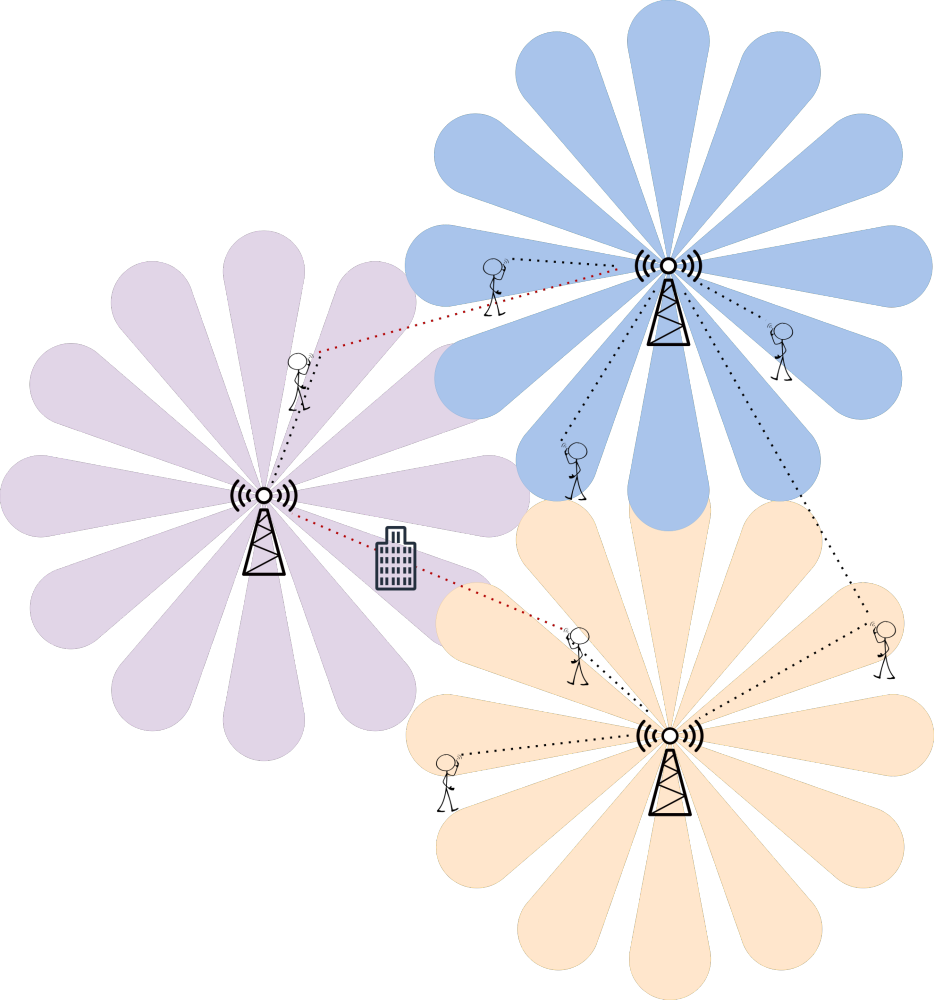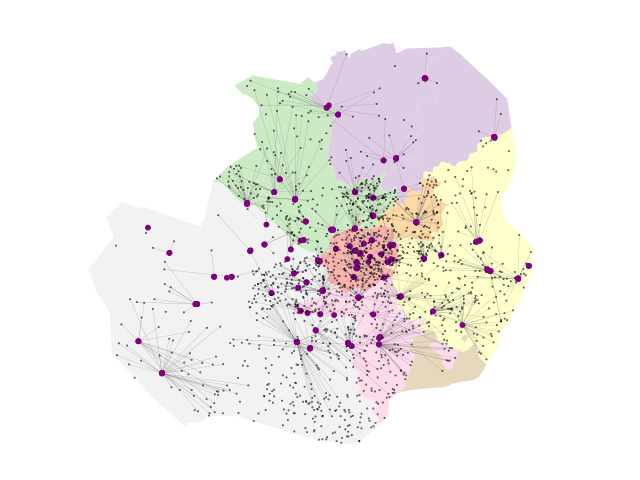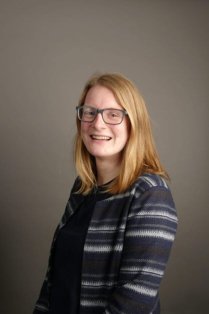Passing on my love and passion for science and maths
Interview with Lotte Weedage by Diana Dalenoord
With a mother as a maths teacher, this discipline is almost a way of life for Lotte. She really enjoys maths, giving presentations, teaching and doing research. If there is a maths gene, Lotte has inherited it from her mother. Lotte is currently a PhD candidate. In addition to doing scientific research, she teaches Linear Structures and supervises students on their bachelors’ assignments.
Why did you choose to do PhD research?
During my master’s assignment, I worked on finding clusters within large networks by using the HyperLogLog algorithm. This is when I got a taste for research and especially on large networks, such as Facebook and Twitter. I investigated the nodes (people) and edges (follower/friends) in these networks and tried to find groups (clusters) of nodes. In a small network, you can find these clusters by using simple, deterministic algorithms. For larger networks with more than 100 million people, this costs too much memory and for that, you need to use an approximate counting algorithm such as HyperLogLog. This algorithm helps you to find these clusters in a quick and memory-efficient way.
After graduating, my interest in this field grew and I was very happy with the opportunity to do PhD research under the supervision of Clara Stegehuis, an expert in the areas of probability theory and stochastic networks. I work in a real women’s power team because, in addition to Clara, I also get a lot of support from Suzan Bayhan, who works in Computer Science and has taken me into the world of 5G. My promotor is Nelly Litvak, who was recently declared UT Teacher of the Year 2022.
Research into the effects of 5G
My PhD research is also about large networks, in line with my master's assignment. I am looking at wireless networks in 5G, which has more features as 4G and 3G, such as multi-connectivity, where people use multiple base stations.

Wireless mobile communication, such as 4G and 5G, uses frequencies in the electromagnetic spectrum. Compared to 4G, 5G provides faster data transfer, shorter response time and more reliable connections. The applications that are possible with 5G work on all frequencies, but because the lower frequencies are in use by 3 and 4G, 5G works on the higher frequency band. The lower frequency band is suitable when there are many users with little data transfer. such as Internet of Things (IoT) applications, from smart home energy meters to agricultural sensors. The 3.5 GHz band is most suitable for combining a high data rate with good coverage. It provides a higher data rate at the local level and is therefore suitable for many business and consumer applications that need high-quality video or image, such as Virtual Reality, high-resolution video and 360-degree video. A disadvantage of this frequency band is that it is more difficult to achieve coverage in buildings; the signal is more easily blocked by walls, windows, trees and even people. In addition, more base station locations are needed because the range of the antennas is shorter.
I am currently researching what happens when everyone is connected to several base stations. It has quickly become apparent that this was not a good thing, because when you are further away from your base stations, your internet quality decreases. A base station has a maximum of resources that can be shared. If many users are far away, the connection deteriorates, and then you experience bugs when watching videos or WhatsApp messages get stuck temporarily and are sent with a delay. In short, the internet becomes much slower. I am doing research on how we could exploit 5G such that everyone can benefit from it. Especially for VR or AR this is necessary, as these applications need a very reliable and fast internet connection, which cannot be delayed or blocked!
The resilience of the Dutch internet
Sometimes, during your research, you run into other problems. This was the case with the question of how reliable the internet is in the Netherlands in the event of earthquakes, floods or power outages. Who will still have a (good) internet connection if the base stations have been damaged or been switched off by a short circuit? During such events, many people will need to use the Internet and make mobile calls at the same time. To find out how reliable the internet is during a natural disaster, you have to make a model/graph of the data of base stations and locations. This is really fascinating to investigate.

Teaching is part of UT-PhD work
PhD work is absolutely not boring because you can pick up different research projects within your PhD study. At UT, PhD students also get teaching tasks. Giving presentations on mathematical topics and passing on your own knowledge to students has always interested me. I chose the Minor 'Leren Lesgeven’ to see if this would be something for me, which I can answer with a clear 'yes'. That is why I also did the Master’s in Science Education and Communication in addition to my Master’s in Applied Mathematics. This knowledge comes in handy now, because I am giving the course Linear Structures, together with Nelly Litvak. Nelly gives the lectures and I take care of the tutorials.
I also supervise a number of bachelor students on assignments I have given them. I often think back to my own bachelor’s assignment that I did for the Solar Team. At the time, I was working on a racing strategy for the solar car, which was supervised by Jasper Gosseling. It is really fascinating to see how someone develops during this programme. What I knew then as a bachelor’s student and what I know now as a PhD student is of course a world of difference. I like using my current knowledge to encourage bachelor students to look in the right direction for answers to carry out the assignment.

I am really happy with my choice for PhD research and the work that comes with it. Although I don’t know exactly what I want to do after this, I would like to continue working partly in science, and also partly as a maths teacher in the classroom so I can enthusiastically pass on my knowledge to others.
